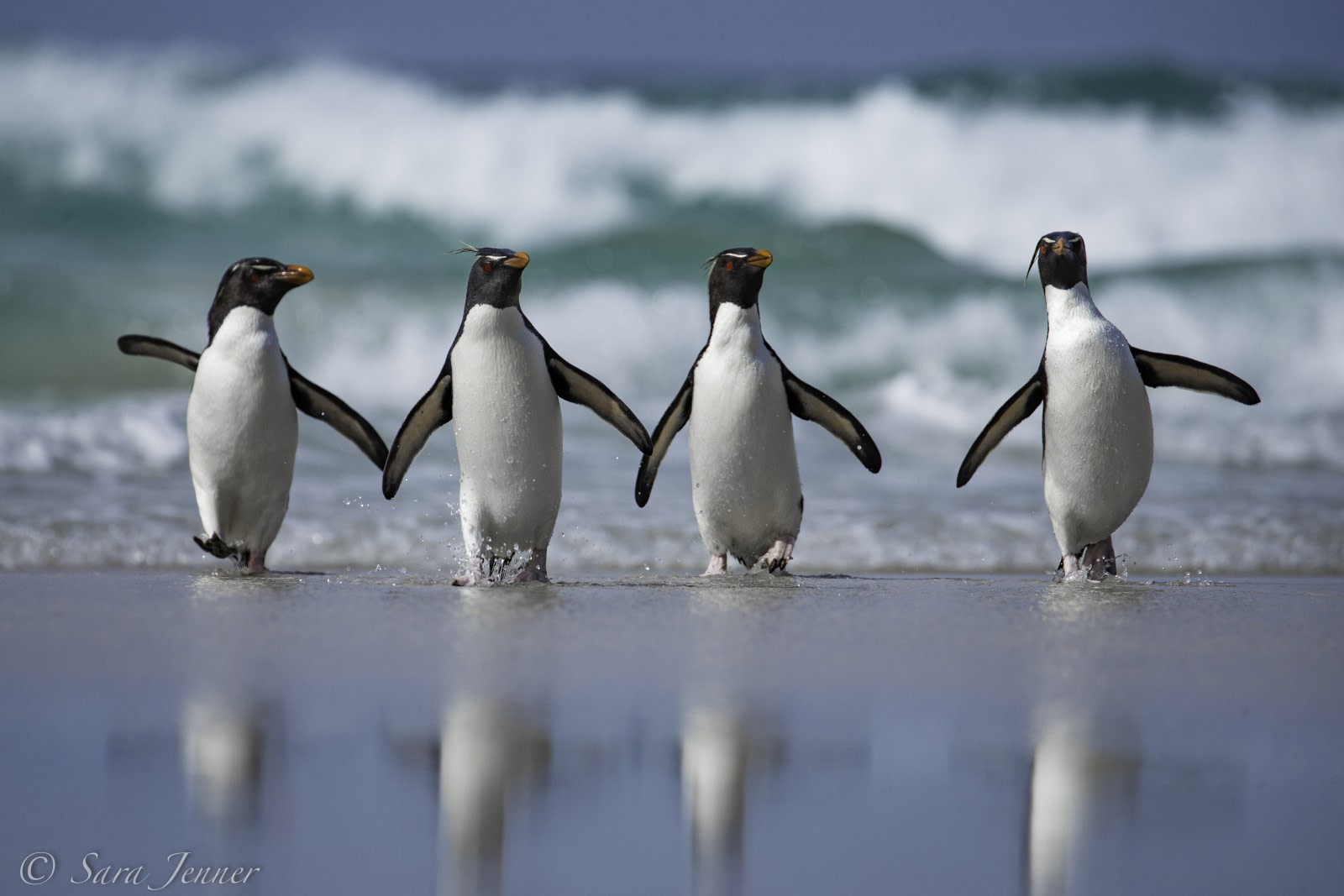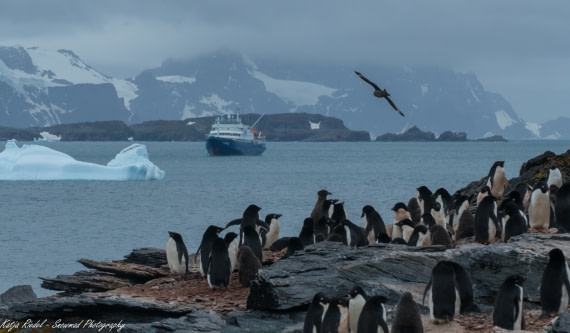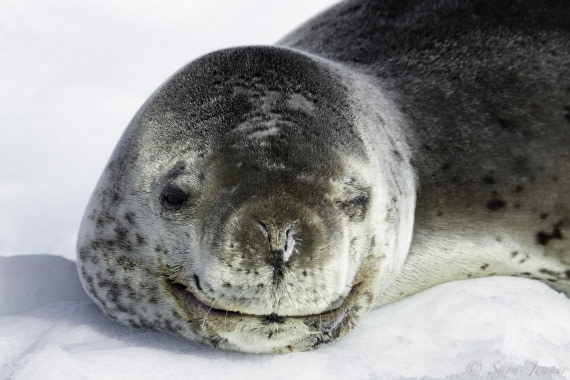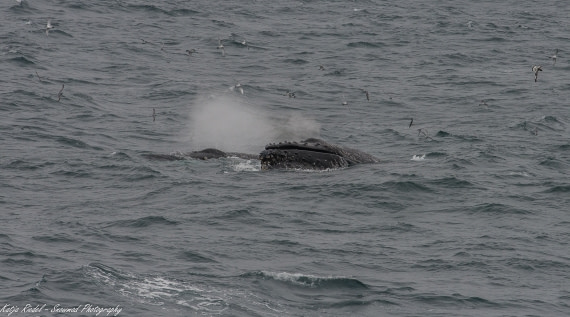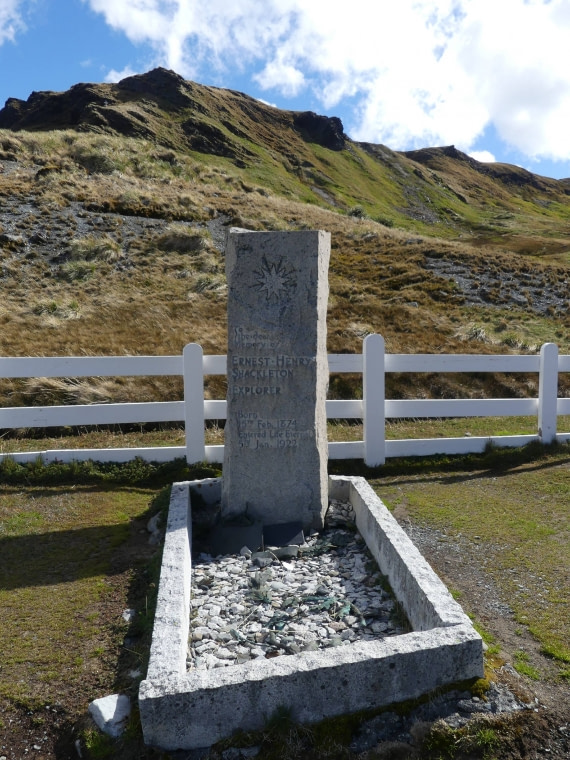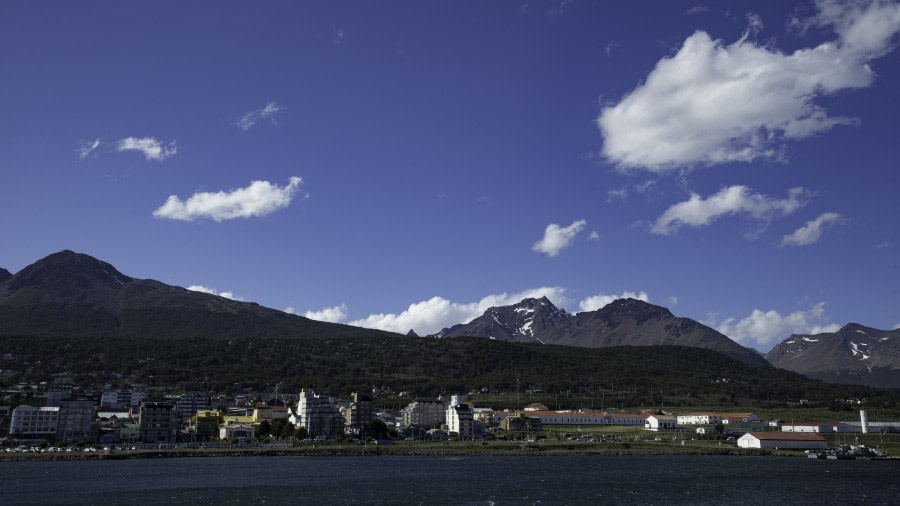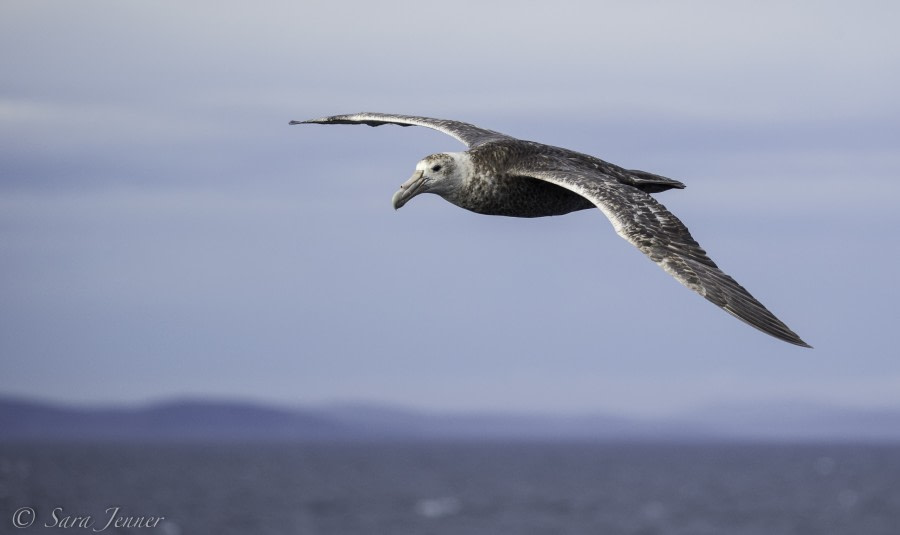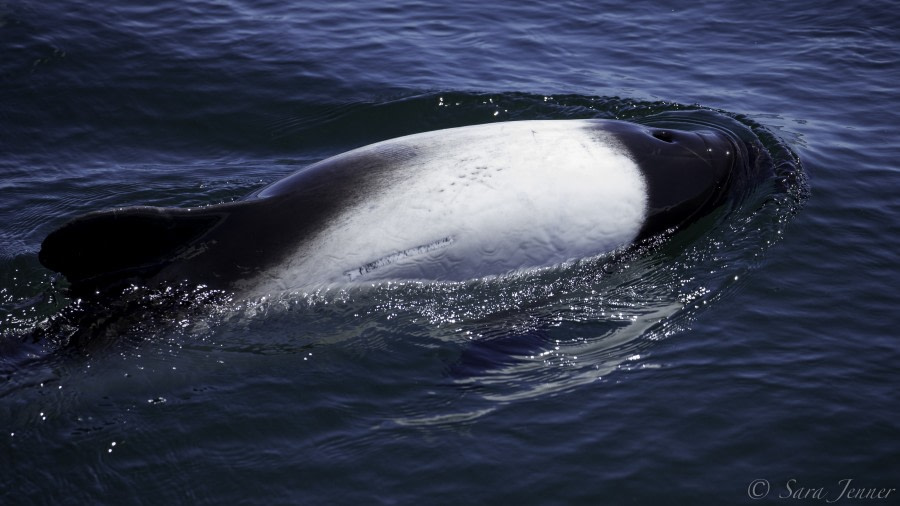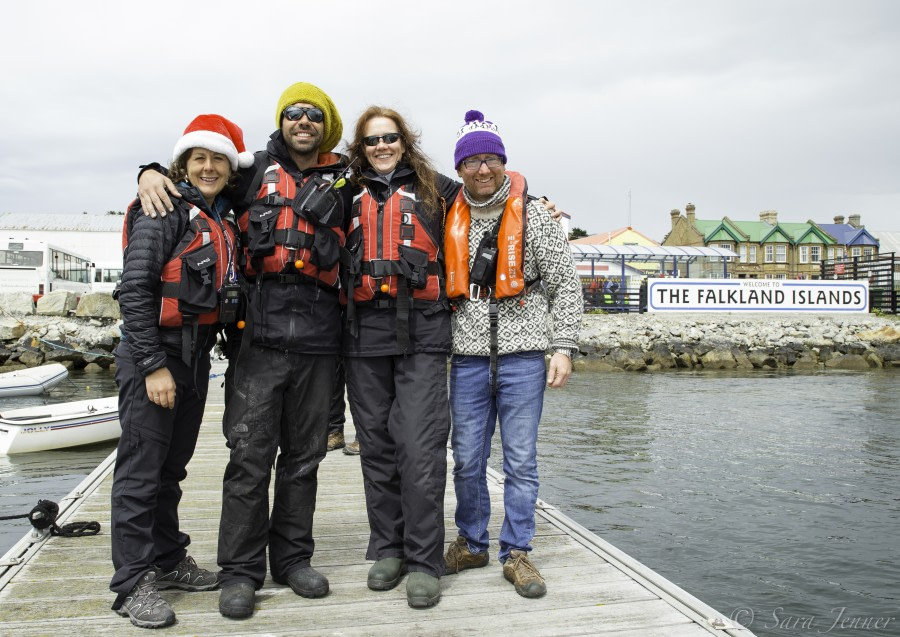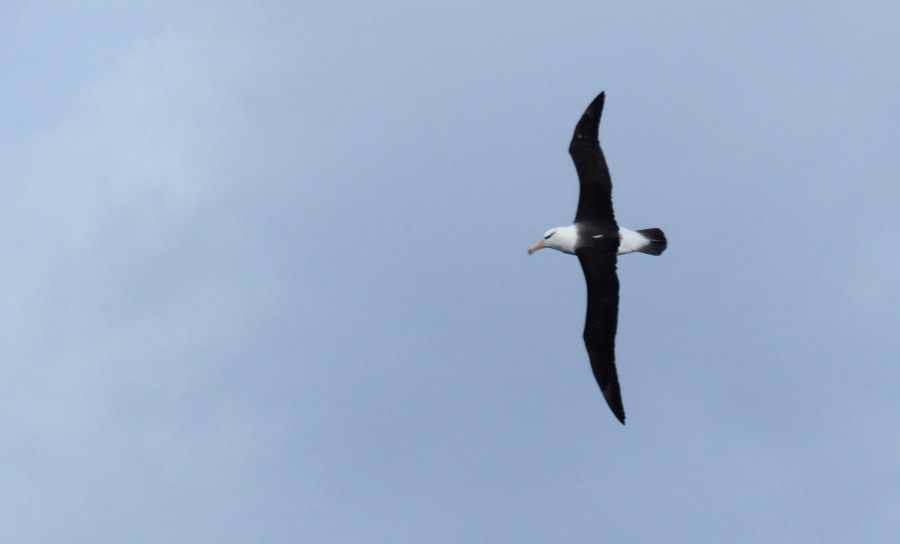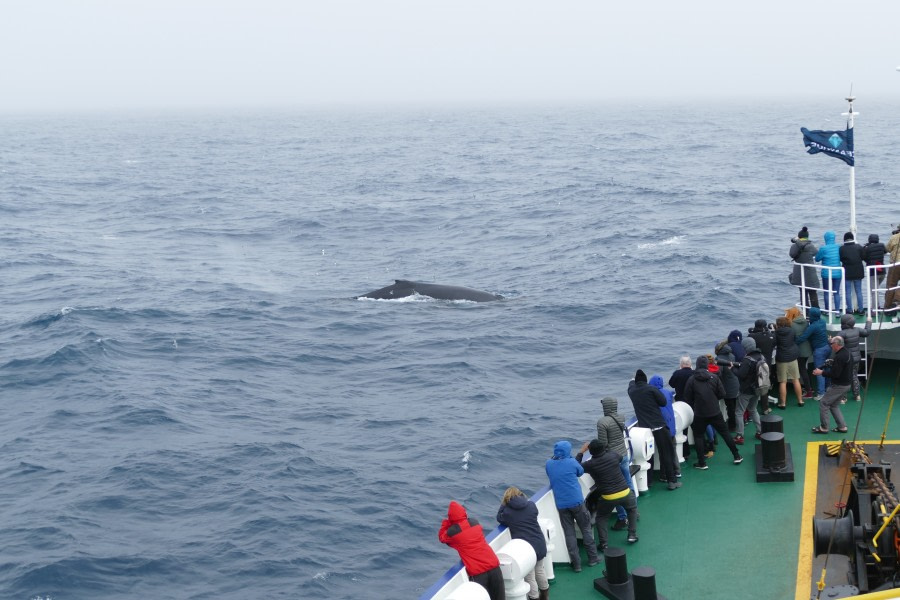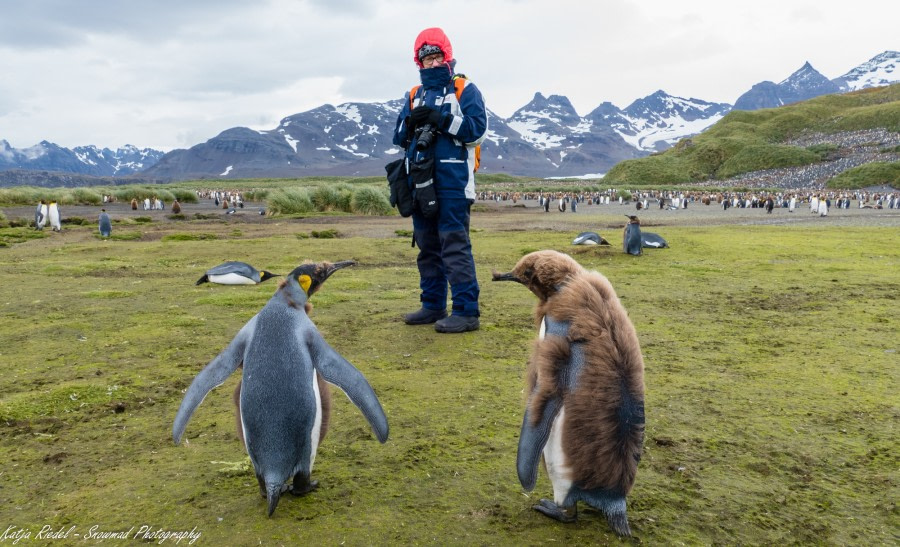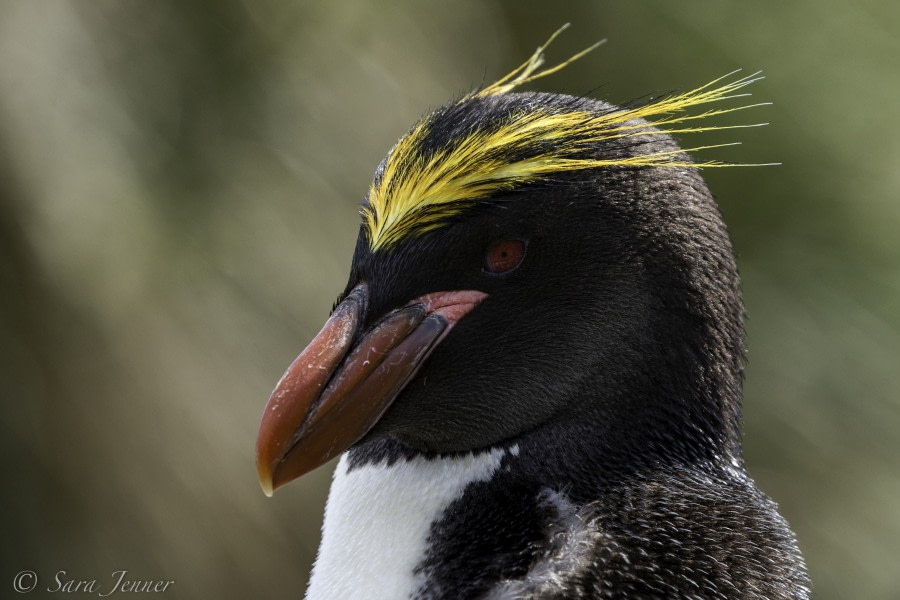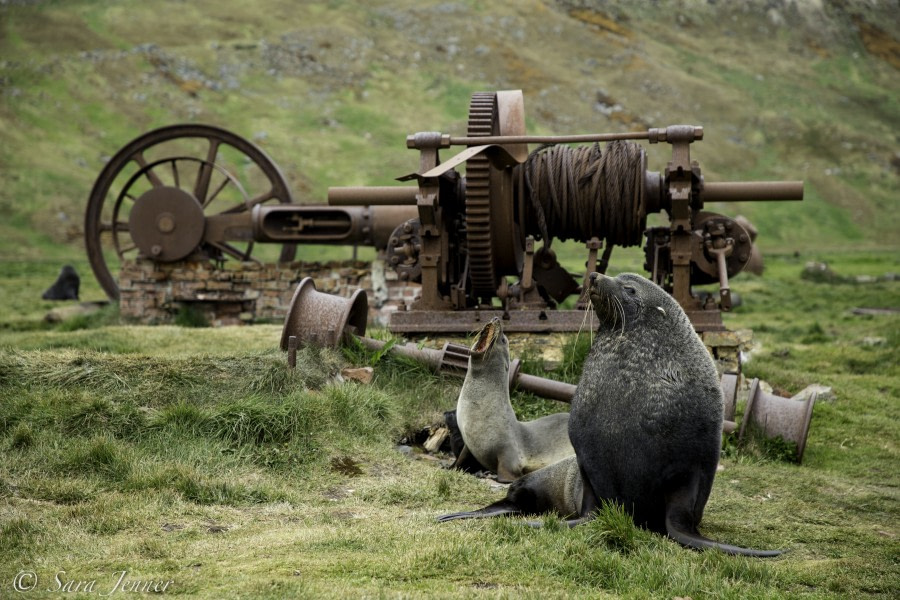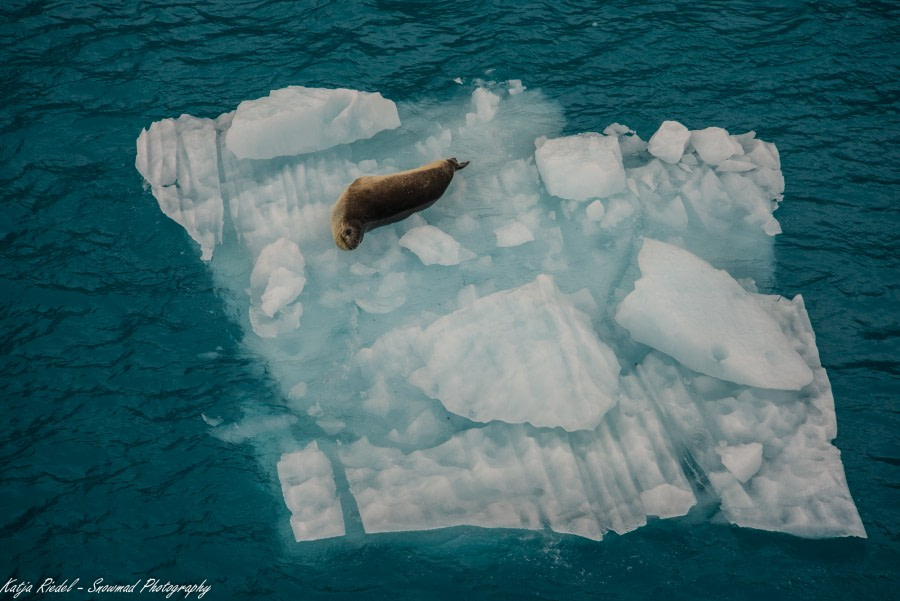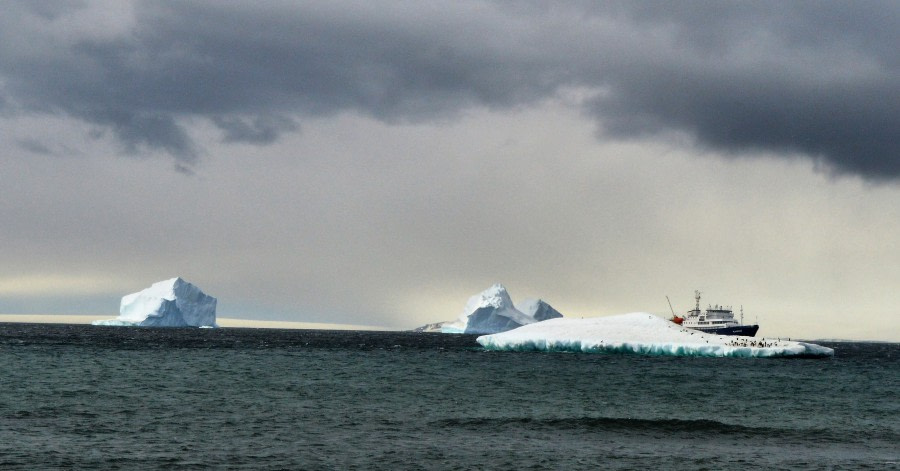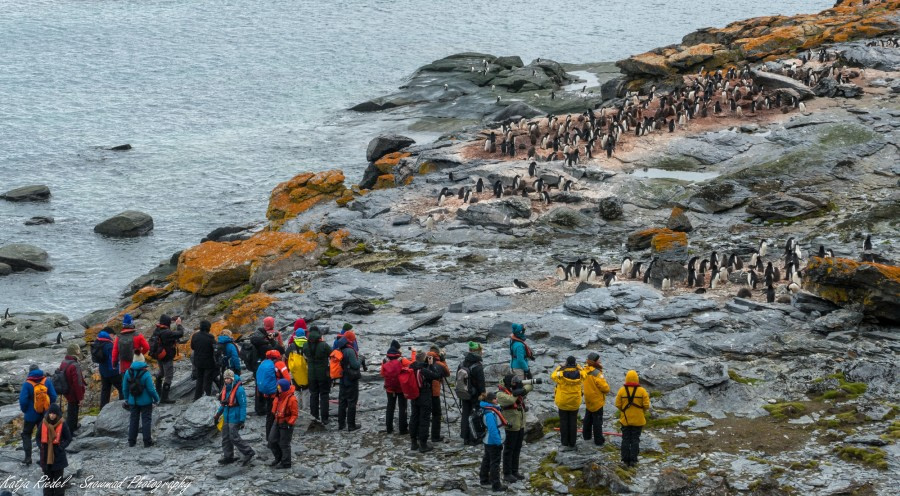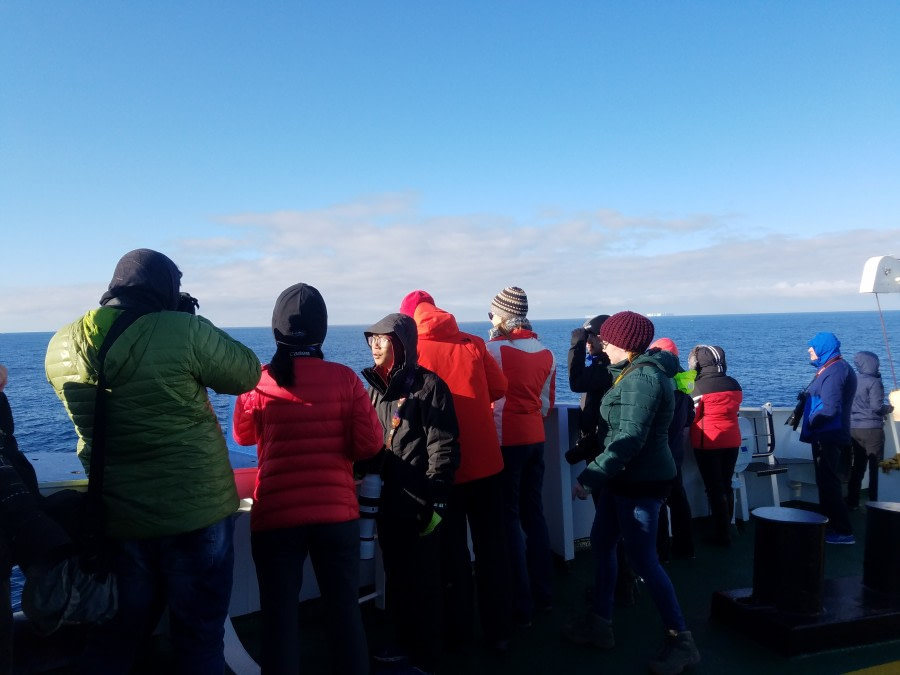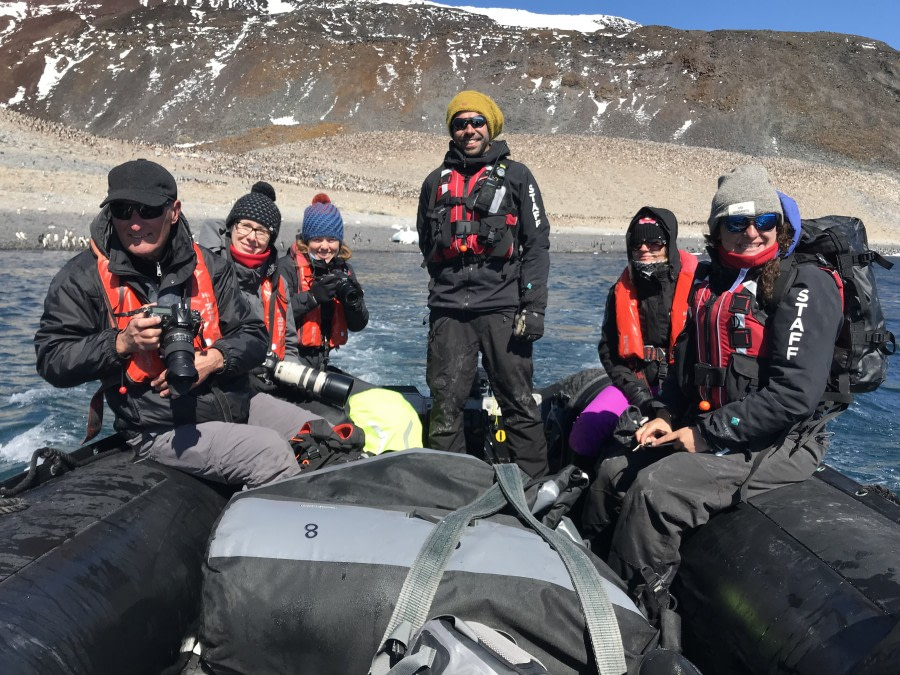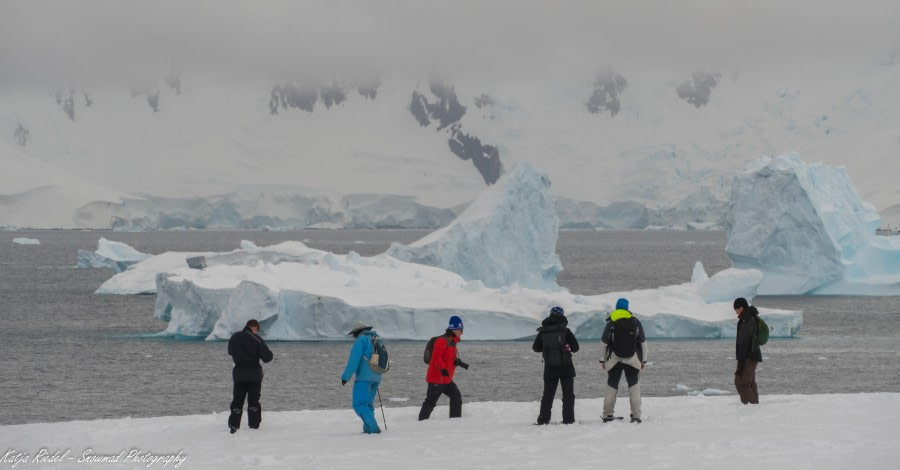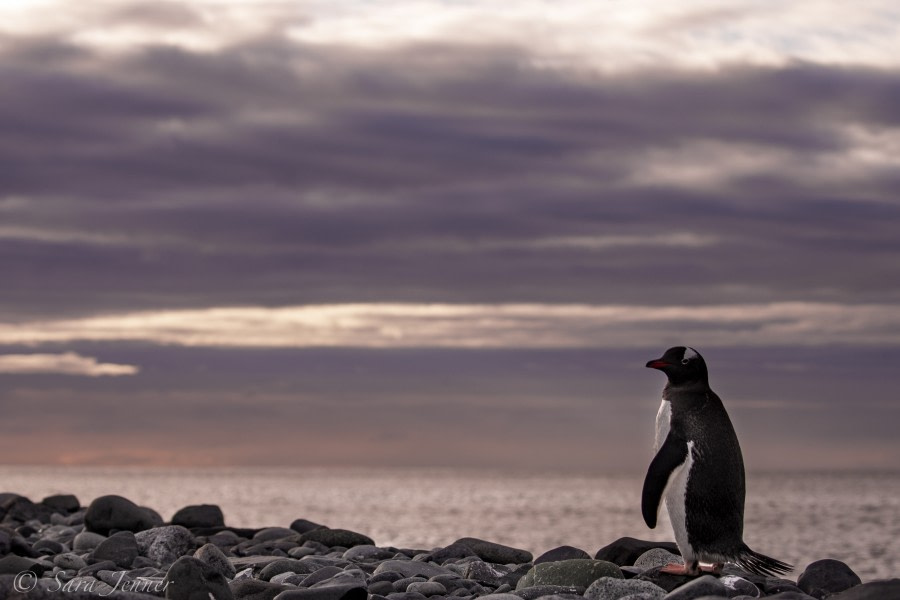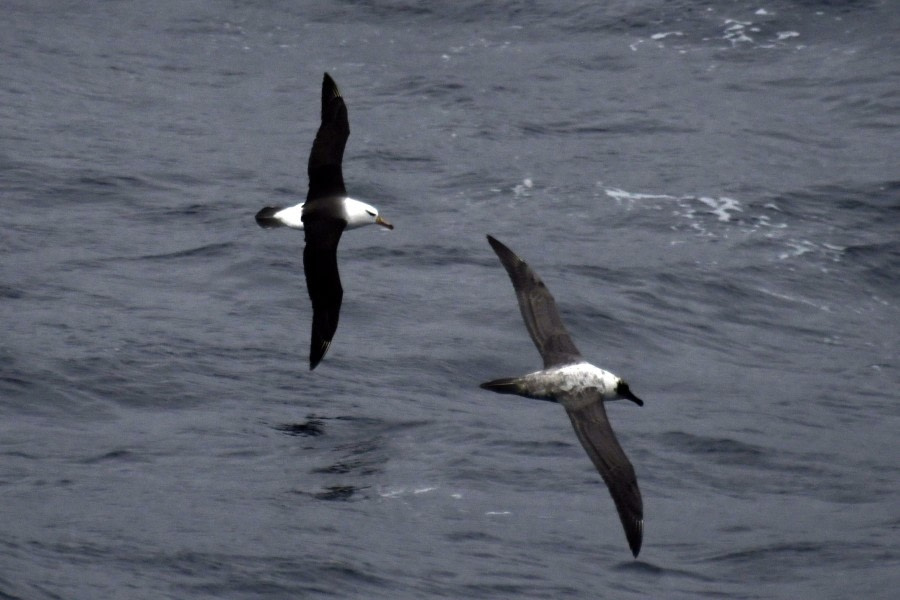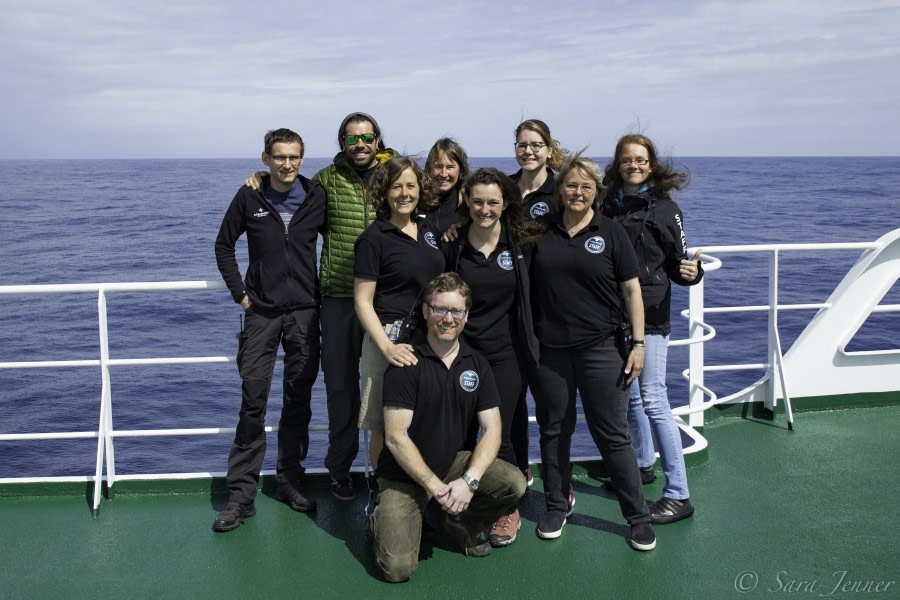| Datum: | 22.12.2018 |
| Positie: | 54°53’S / 067°52’W |
| Wind: | NNW-6 |
| Weer: | Overcast |
| Luchttemperatuur: | +15 |
Ushuaia! ‘The End of the World; the Beginning of Everything’ as a rather splendid wall-painting proclaims. Most of us had time to explore this dramatically-located settlement before boarding Plancius between 4 and 5 pm. Gusts of wind around 50 knots and little drizzle of rain welcomed us on board. We were shown to our cabins to unpack, and then excitedly checked out our new home for the next 19 days. Locating the whereabouts of the bar and 24/7 coffee/tea station was the most important task. At 5:15 pm we were summoned to the Lounge/Bar by Lynn Woodworth, our Expedition Leader. She introduced herself, welcomed us on board, then showed us an important safety video about what to do in emergencies at sea. It is important that we keep ourselves and others safe as we sail to remote destinations, with little or no medical help. Chief Officer Miia supplemented this information with a few details specific to Plancius and our voyage. At about 6:00 pm we heard the seven short and one long blasts alerting us to the all-important life boat drill, which must be held before we reach the open sea. Because of the strong wind that was into the harbour, we did the drill still tied to the dock. We mustered in the Lounge, a roll-call was taken and then we were all led out to the life boats. Now we know precisely what to do and where to go in the unlikely event of an emergency. We also had the chance to have a look inside the life boats. Before dinner, we had the Captain’s cocktails, where our nice Captain Artur Iakovlev, the Master of the Vessel and the man responsible for getting us all safely to the Falkland Islands, South Georgia and Antarctica – and back again - gave a short speech. We drank to the success of our voyage. We then met Zsuzsanna, the Hotel Manager. She talked about life on board from dinner to wifi and room cleaning. All the expedition staff introduced themselves and talked a bit about their background and their love for the polar regions. Finally, Moniek Mestrom, our lovely doctor, introduced herself and tried not to scare us with sea sickness. 7:30, it was dinner time. The Dining Room was buzzing, and we enjoyed our first meal on board. Around 9 pm, the wind dropped down and stopped pushing us onto the dock. The Argentinean pilot gave us the go and we were off down the harbour and into the Beagle Channel. With the sunset and calm waters, we had the chance to enjoy the view, with a few terns and petrels flying around the boat and we even sighted some Magellanic penguins diving near the ship. Afterwards, a few passengers and staff adjourned to the bar, but it was a quiet evening socially. Most of us spent some time on deck admiring the scenery and wildlife, before heading for bed and a good night’s sleep. Tomorrow we will wake up in the open ocean, our Plancius Bridge team in sole control, well on our way to the Falkland Islands.
